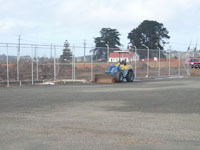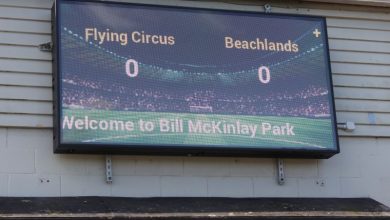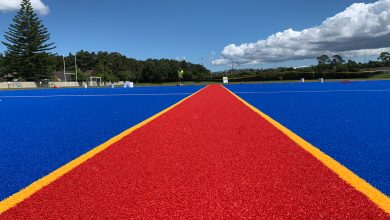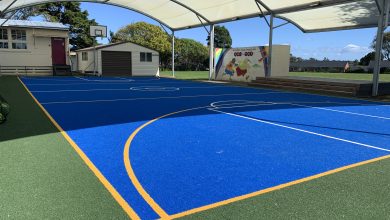Feasibility Studies – Making an informed choice

 Over recent decades, the quality, safety and carrying capacity of school playing fields has become increasingly important. During this time, technological advances have been made in both natural and synthetic turf surfaces.
Over recent decades, the quality, safety and carrying capacity of school playing fields has become increasingly important. During this time, technological advances have been made in both natural and synthetic turf surfaces.
Schools have a multitude of options available to them when considering upgrading their playing surfaces.
As each school and site has different needs, the ideal
option will vary. Undertaking an independent feasibility study will help clarify what options are suitable for your school’s site, budget and expectations.
What is a feasibility study?
Feasibility studies allow schools to identify the best option for their situation. In other words, it is a study that considers a range of possible solutions for achieving a particular goal, thereby reducing the risk
of wastage, unnecessary cost, or most importantly disappointment.
What is involved?
Feasibility studies need to be personalised for each project and the complexity needs to reflect the nature and value of the project. Typically a feasibility
study would include at least some of the following:
• Client requirements/ expectations
• Options
• Site appraisal
• Project constraints
• Financial information
• Consultation
• Evaluation/ Recommendation
Client requirements/ expectations
The first step in a feasibility study is to accurately define and state the school’s requirements or expectations. For example: “Drainage shall be
improved such that the field is available for use within 30 minutes of rain stopping and subject to the rainfall intensity not exceeding 20mm/hour”.
Options
The feasibility study would typically identify all practical options that could be used to achieve the stated objective. In some cases the school will
already know what option is required (e.g. sand carpet field, 3G synthetic surface etc.) in which case the feasibility study will only need to address issues
that relate to this choice. Inevitably as the project is
worked through there will be sub options that need to be considered. Such permutations are what make feasibility studies such a valuable planning tool and why so-called ‘off the shelf options’ may not provide the best result or level of improvement required.
Example One: Sports field drainage improvement
|
GOAL |
MAJOR OPTIONS |
SUB OPTIONS |
|
Drainage shall be improved such that the field is available for play within 30 minutes of rain stopping and subject to the rainfall intensity not exceeding 20mm/hour. |
Sand |
Grass type? |
|
Sand carpet |
||
|
Full sand
|
||
|
Synthetic fields
|
Sand filled surface?
|
Site appraisal
A detailed site appraisal will help the school
understand the site’s limiting factors that must:
• First be addressed if the level of improvement is to be achieved, and
• Secondly whether the site features are compatible with all of the proposed improvement options.
For example, considerations could include:
• Topsoil depth and quality
• Presence of contaminated soil
• Old rubbish tip site
• Drainage reserve
• Site access
• Site dimensions
• Earthworm activity etc.
Project constraints
The feasibility study would typically consider any external constraints that could impact on the proposed improvement options. These issues must be managed if the project is to be a success and delivered on time.
Typically these constraints may include:
• Resource and building consent requirements
and the time required to complete this process.
• Time constraints – e.g. we need the field to be
available for a large tournament in third term.
• Budgetary constraints – both capital and
maintenance costs need to be considered.
• Other (contractor availability, requirement/
availability for specialised machinery,
specialised materials needed etc.).
Financial Information
A raft of financial information will need to be considered such as financing options, the cost of
these and cash flow requirements during the project.
Changes to maintenance costs are an important consideration as surprisingly many schools are
unaware that a better playing standard will inevitably impact on the maintenance budget. There is little point in investing in a better surface if you can’t
adequately maintain it.
If the school is considering installing a synthetic surface versus upgrading a natural surface, both the maintenance and capital costs over the
expected life of each option should be considered. It
may be that the cumulative effects of increased maintenance cost associated with the upgraded natural surface make it a far less attractive option
than it first appears.
Advantages/ disadvantages
To assist with the decision process, the advantages and the disadvantages of each option should be documented.
Consultation
Consultation with interested parties (parents, external user groups and budget approvers) is an important part of adopting a change in playing quality. Consultation enables management to obtain both positive and negative feedback for each of the options tabled and how much they are prepared to pay. This assists in ensuring that users understand what they are getting and future disappointment is largely avoided.
Evaluation/ Recommendation
Finally, the feasibility study should identify the basis
upon which the final decision will be made. There are a variety of methods that can be used; some of which include:
• Affordability
• Cost benefit analysis
• Payback period
Affordability
Questions to ask may include:
Can we afford to finance the proposed improvement (directly or via a loan)?
Are the increased maintenance costs based on our present income stream affordable?
Cost benefit analysis
In effect this involves not completely focussing on up-front costs, but rather additional
benefit(s) that the improvement option will provide, e.g. a synthetic field will generally be more expensive to construct than a sand or soil field, but this additional cost may be offset or justifiable given:
• The greater use that synthetic surfaces can accommodate
• The improved predictability of use provided
Payback period
An improvement option may generate additional income via renting out to external users or by attracting more students as a result of the higher quality facilities on offer.
Summary
Feasibility studies are a planning tool that better enable schools to determine the most appropriate
option for a given situation. Each site is unique and even what seems like a ‘standard design concept’ typically requires adjusting to meet a specific
situation and client need or expectation.









